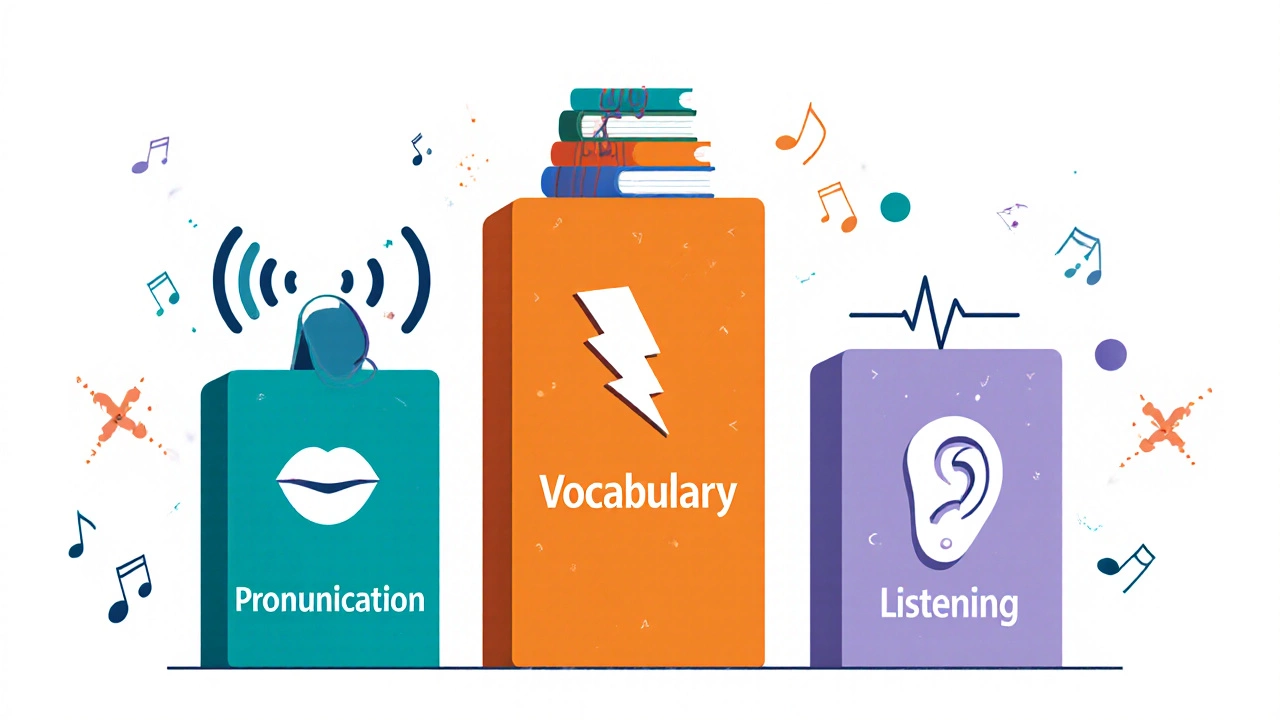English Speaking Practice: Tips, Tools, and Real‑World Strategies
When working with English speaking practice, the regular activity of speaking English to boost confidence and accuracy. Also known as oral English training, it helps learners move from classroom theory to real conversation. English fluency, smooth, natural speech without pauses is the main goal, while speaking skills, pronunciation, vocabulary use, and intonation are the building blocks. Modern online platforms, websites and apps that connect learners with native speakers act as accelerators. In short, English speaking practice encompasses conversation practice, requires consistent feedback, and is influenced by online platforms.
Practical Ways to Build Confidence
One of the fastest routes is joining a conversation club. You meet a small group, pick a topic, and speak for five minutes. The real‑time pressure forces your brain to retrieve words on the spot, which strengthens neural pathways. If you can’t find a club nearby, try role‑play with a friend: pretend you’re ordering coffee, interviewing for a job, or explaining a hobby. Shadowing native speakers—listening to a short clip and repeating it word‑for‑word—sharpens pronunciation and rhythm. All these activities share a common pattern: they provide output before you fully understand every rule, forcing you to learn by doing.
Technology gives you a feedback loop that was impossible a decade ago. Apps like speech‑recognition tools compare your voice to a native model and highlight mispronounced sounds. Recording yourself and playing back lets you catch mumbling or monotone speech that you wouldn’t notice while talking. Some platforms even match you with a language partner for a 30‑minute video call, so you get live correction. To keep progress measurable, set a weekly goal—say, 10 minutes of shadowing and three conversation sessions. Track your score using a simple spreadsheet: date, activity, minutes, and a self‑rating from 1 to 5. When the rating climbs, you’ll see confidence growing in real numbers.
Whether you prefer group chats, one‑on‑one video calls, or solo shadowing, the key is consistency and smart use of tools. Below you’ll find a hand‑picked collection of articles that dive deeper into each method, review the best websites for practice, and share checklists to keep your learning on track. Armed with these resources, you can turn English speaking practice from a weekly chore into a daily habit that yields noticeable results.
Oct
27

- by Dhruv Ainsley
- 0 Comments
How to Improve Your English Speaking Skills Fast and Naturally
Learn how to speak English better with practical, daily habits-not grammar drills. Discover how mimicking native speakers, speaking fearlessly, and using simple phrases can boost your fluency fast.
Oct
10

- by Dhruv Ainsley
- 0 Comments
How to Train to Speak Fluent English - Proven Steps for Real Fluency
A step‑by‑step guide that shows how to train speaking fluent English, covering pronunciation, listening, practice methods, immersion tricks, and a 30‑day action plan.